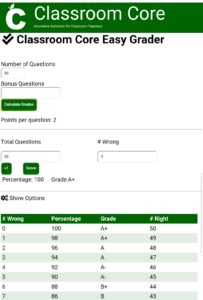1. Know your subject
It may seem obvious, but the reports find that the best teachers have a deep knowledge of their subject, and if that falls below a certain point it has a significant impact on students’ learning. Targeted help for teachers, giving them an understanding of particular areas where their knowledge is weak, could be effective.
2. Praise can do more harm than good
The wrong kind of praise can be harmful for students. A number of studies conducted by education experts, including Carol Dweck professor of psychology at Stanford University and Auckland University professors John Hattie and Helen Timperley, have observed this. If a pupil’s failure is met with sympathy rather than anger then they were more likely to think they had done badly due to a lack of ability.
3. Instruction matters
The quality of teaching has a big impact on the achievement of students’ from poorer backgrounds, and effective questioning and assessment are at the heart of great teaching. This involves giving enough time for children to practice new skills and introducing learning progressively.
4. Teacher beliefs count
The reasons why teachers do certain things in the classroom and what they hope to achieve has an effect on student progress. Mike Askew, the author of Effective Teachers of Numeracy, found that beliefs about the nature of math and what it means to understand it, along with teachers’ ideas about how children learn and their role in that process, was an important factor in how effective they were.
5. Think about teacher-student relationships
The interactions teachers have with students has a big impact on learning. It is important to create a classroom environment that is constantly demanding more while affirming students’ self-worth.
6. Manage behavior
Classroom management – including how well a teacher makes use of lesson time, coordinates classroom resources and manages the behavior of students – was noted as important.
7. There’s no evidence that setting works
Putting students in groups depending on their ability makes little difference to their learning. Although setting can in theory let teachers work at a pace that suits all pupils and tailor content, it can also create an exaggerated sense of all pupils being alike in the teacher’s mind. This can result in teachers not accommodating to the various different needs within one group and in some instances going too fast with high-ability groups and too slow with low ones.
8. Don’t worry about learning styles
A survey showed that more than 90% of teachers think individuals learn better when they get information in their preferred learning style. But despite the popularity of this approach psychological evidence shows that there is no evidence this actually works.
9. Learning should be hard at first
Elizabeth Ligon Bjork, professor at the University of Michigan and Robert Bjork, professor at the University of California, said that varying the type of tasks you ask pupils to do improves retention even though it makes learning harder initially.
10. Build relationships with colleagues and parents
A teacher’s professional behavior, including supporting colleagues and talking with parents, also has an impact on students’ learning.
 We’ve made updates to the web easy grader to eliminated bugs and increase it’s usability. The new version is available at the same link: http://classroomcore.com/grader. The mobile app versions should be available soon.
We’ve made updates to the web easy grader to eliminated bugs and increase it’s usability. The new version is available at the same link: http://classroomcore.com/grader. The mobile app versions should be available soon.